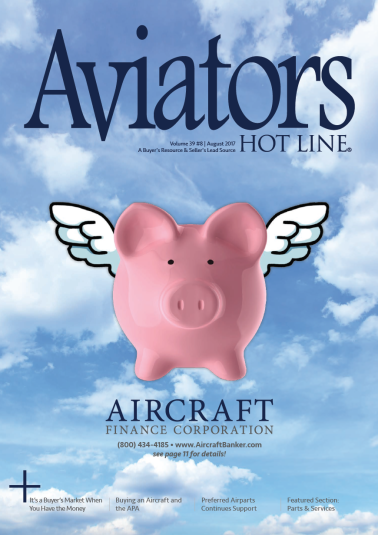Ormon immediately leased the aircraft to a pharmaceutical company for three years. “That’s when I discovered the attractive quality of ‘mature’ aircraft: even after they have been fully depreciated, their residual value can be impressive. Many aviation lenders dislike an older aircraft on their balance sheet,” Ormon reflects. “In fact, many of the ‘big banks’ frequently call AFC to take older aircraft out of their portfolio, which we gladly do.”
“Maintenance programs are a key factor in our credit decisions,” says Ormon. “These programs seem costly at first however, hundreds and thousands of dollars out of pocket to repair a ‘hot’ section or fan blades will change your mind real quick.” Ormon further states that both JSSI and MSP offer a variety of programs from catastrophic to full coverage and says that they are well worth it. He is frequently asked, “Martin, do we really need an engine program?” His answer is always the same, “Yes.”
Ormon continues by saying that “The market has gotten a bit oversold. Let’s call it a ‘cocktail-flu.’ Part of the reason is cheap money and an abundance of late model, mid-cabin and large passenger pre-owned jet aircraft. Supply and demand, if you will. In this turn of events, we are seeing many first-time jet owners trying to cash in on the charter market. We see many turboprop owner/operators upgrading to unbelievable market values in the mid to large cabin market. The numbers of our closed transactions reveal this: Citations (XLS, CJ3, CJ2), Hawkers (850xp, 900xp) are in very high demand, Falcons (2000’s and 900’s) are incredible values, followed by Lear Jets and Challengers.”
Let’s talk about financing. We asked Martin Ormon what sets AFC apart from traditional financing. He replied that very few purchasers truly understand that 20-year terms are available on pre-owned aircraft. Ormon continued by saying, “It’s a classic case of the ‘big banks’ rigging the game and putting a noose around the jet owner’s necks, only to maintain their balance sheet and their own portfolios. They keep their margins growing and simply front end the interest payments in their favor. Let’s be real. Aircraft, at the end of the day, are a credit based loan and not an asset based loan like those ‘big banks’ would like you to think.
“We recently refinanced a Challenger 605 for a Texas business owner. The client had previously financed the aircraft with one of the ‘big banks’ and had a monthly payment of $70,169 with a 7-year term. With our 20-year term, his payment became $29,515 per month which allowed his business to maximize their cash flow.”
Ormon prides himself on the fact that his clients become lifelong clients and often times, friends. “Relationships, not transactions are what the ‘big banks’ seem to forget,” Ormon says and he further states that “Better than 85% of our loans stay in house as we underwrite, service and portfolio our own loans. Also, our customers loans never get sold to the secondary market.” When asked what his biggest rule of thumb in the aviation financing business is, Ormon is quick to reply. “The number one rule in banking is, ‘know your customer and know their business’.”
Aircraft Finance Corporation manages the financing process from financial review, underwriting, proposal, documentation, and closing. We make sure that when our clients close on their aircraft, they have confidence in knowing that they got the best deal out there.








